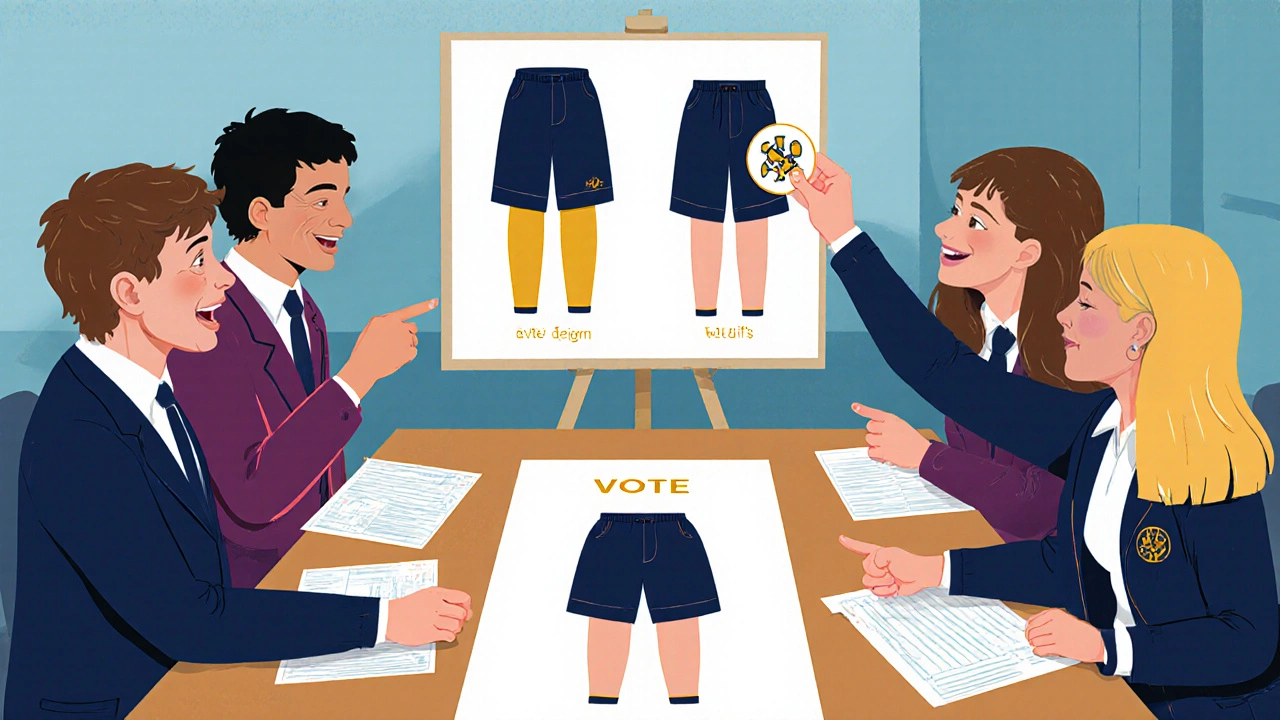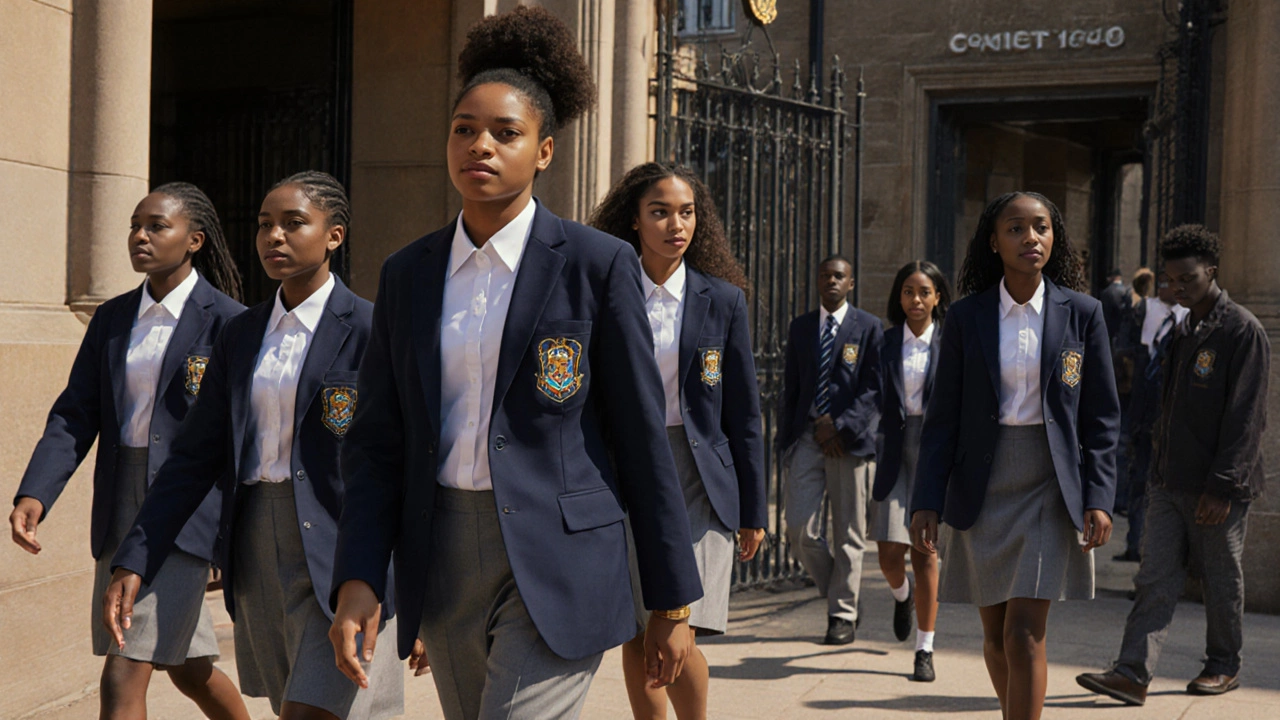Uniform Cost Calculator
Calculate Your Savings
Your Savings Analysis
Based on 2023 dataUniforms typically save families 20-35% annually on clothing costs after the initial purchase
Click Calculate to see your savings
Every morning, thousands of students walk into school wearing whatever they picked out the night before-sometimes matching, sometimes not. Some wear hoodies with giant logos, others show off designer sneakers, and a few show up in clothes that don’t fit or aren’t weather-appropriate. Meanwhile, others in the same school wear the same navy blazer, white shirt, and grey skirt or trousers. Why? Because uniforms aren’t just about control-they’re about fairness, focus, and belonging.
Uniforms level the playing field
Not every family can afford the latest sneakers, branded hoodies, or trendy jeans. When students show up in different clothes, it’s easy to spot who has more money-and who doesn’t. That creates invisible walls. A child wearing second-hand clothes might feel ashamed. Another might feel superior. Uniforms remove those markers. No one knows if your shirt came from a thrift store or a boutique. Everyone starts on the same footing.
A 2023 study by the University of Auckland followed 1,200 students across 15 public schools. Those with mandatory uniforms reported feeling less pressure to keep up with fashion trends. Teachers noticed fewer incidents of bullying tied to clothing. One 13-year-old student put it simply: "Now I don’t have to worry about what I’m wearing. I just worry about my math test."
Uniforms reduce distractions
Think about your own day. How often do you notice what someone’s wearing? In a classroom full of teens, it’s constant. A flashy hoodie. A ripped pair of jeans. A shirt with a controversial slogan. These things pull attention away from learning. Uniforms cut through the noise.
Teachers in Wellington schools that switched to uniforms reported a 30% drop in dress-code violations within the first term. That’s not because students became more obedient-it’s because the rules became simple. No more debates over skirt length, sleeve width, or sneaker color. The uniform is clear. Everyone knows the rules. That means less time spent on discipline and more time spent on teaching.
They build school identity
Think about sports teams. They wear matching jerseys. Why? Because it creates unity. The same logic applies to schools. A uniform turns a group of individuals into a team. It says, "We’re part of something bigger."
At Henderson High in West Auckland, students wear a navy-and-gold uniform with the school crest. Alumni still wear it to reunions. Parents say their kids feel prouder of their school. It’s not about branding-it’s about belonging. When students wear the same thing, they start to see themselves as part of a community, not just a collection of individuals.

They make mornings easier
How many mornings have you spent staring into a closet, trying to decide what to wear? Now imagine doing that every day for 180 days a year-on top of homework, sports, and family responsibilities. For many families, especially those with multiple kids, choosing outfits is a daily stressor.
Uniforms simplify life. Parents don’t have to shop for trendy clothes. Kids don’t have to argue about what’s "cool." One mother in Christchurch told me: "I used to spend hours picking out outfits for my two daughters. Now I just grab the uniform. We get out the door 20 minutes faster."
They prepare students for the real world
Not every job lets you wear whatever you want. Nurses wear scrubs. Police wear uniforms. Engineers wear safety gear. Even office workers often follow a dress code. School uniforms teach kids early that appearance matters in professional settings-not because of fashion, but because of respect.
When students wear uniforms, they learn that how you present yourself affects how others treat you. That’s a lesson that lasts beyond graduation. It’s not about suppressing individuality-it’s about understanding context. You can still be yourself inside the uniform. Your voice, your ideas, your creativity-they’re not tied to your shirt.

What about self-expression?
"But what about freedom?" That’s the most common argument against uniforms. People worry that forcing students to dress the same kills creativity. But uniforms don’t erase identity-they just shift where it’s expressed.
Students still choose their hairstyles. Their accessories. Their backpacks. Their grades. Their clubs. Their art. Their voices. Many schools now allow students to wear colored scarves, pins, or wristbands that reflect their culture, beliefs, or causes. Some even let students design their own uniform options within guidelines.
At Napier Intermediate, students voted on three uniform styles last year. They picked one with a choice of shorts or pants. They kept the colors but added a logo they designed. That’s not suppression. That’s participation.
It’s not perfect-but it works
Uniforms aren’t magic. They won’t fix bad teaching or low funding. They won’t stop all bullying. But they do remove one major source of stress, inequality, and distraction. In schools that have kept uniforms for more than five years, attendance rates have gone up. Suspensions have gone down. Parent satisfaction has improved.
It’s not about forcing conformity. It’s about creating a space where everyone, no matter their background, can walk in and feel like they belong. Where the focus isn’t on what you’re wearing-but on what you’re learning.
Do school uniforms improve academic performance?
There’s no direct proof that uniforms raise test scores. But they create conditions that help learning: less distraction, fewer behavioral issues, and more focus. Schools with uniforms often see better attendance and fewer suspensions-both linked to improved academic outcomes over time.
Are uniforms expensive for families?
Initially, buying a full uniform set can feel costly. But over time, families spend less. No more buying new trendy clothes every season. Uniforms are durable, often bought in bulk, and reused by siblings. Many schools offer second-hand uniform swaps or financial aid for low-income families.
Can students still be individual with uniforms?
Absolutely. Uniforms control clothing, not personality. Students express themselves through their grades, artwork, music, sports, leadership roles, and how they speak up in class. Many schools let students personalize uniforms with approved pins, patches, or colored accessories that reflect their identity.
Do uniforms work in all types of schools?
Yes. They’ve been successfully used in public, private, urban, and rural schools-from small towns to big cities. The key isn’t the school type, but how the policy is implemented. Involving students and parents in choosing the design leads to better acceptance and longer-term success.
What if my child hates wearing uniforms?
It’s normal to feel that way at first. But many students who initially resist uniforms end up liking them. Why? Because they stop worrying about being judged for their clothes. If your child is struggling, talk to the school. Many have flexible options-like different styles or seasonal adjustments. The goal isn’t to force compliance, but to create a fairer, calmer environment.
What comes next?
If you’re a parent wondering whether to support uniforms at your child’s school, start by asking questions. What’s the current dress code? How many students get in trouble for clothing? How do teachers feel about distractions? Talk to other parents. Look at data from schools that made the switch.
If you’re a student, speak up. Propose a design that includes your ideas. Ask for input from others. Uniforms don’t have to be boring. They can be a shared project-one that makes school better for everyone.
It’s not about control. It’s about care. About giving every child the same chance to learn, without the weight of what they’re wearing.

